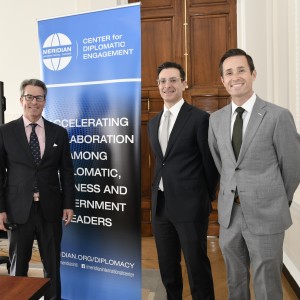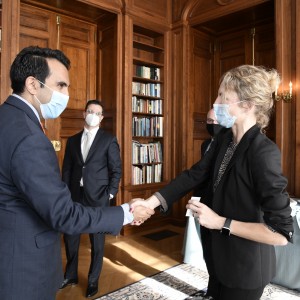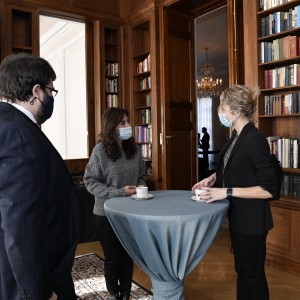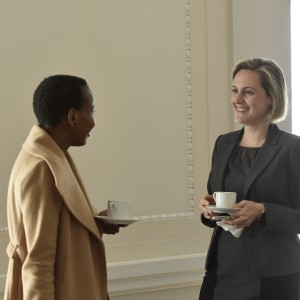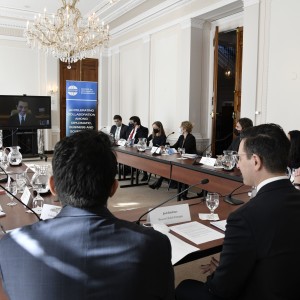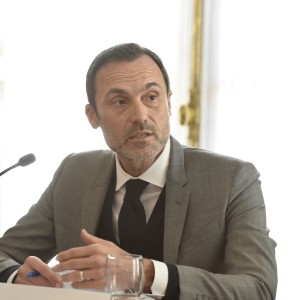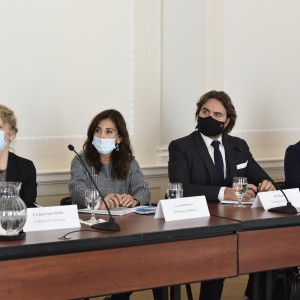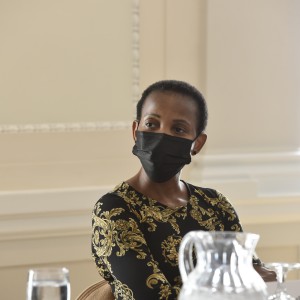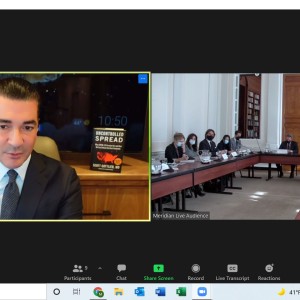Top Takeaways: Sprinting Towards Vaccine Equity with Dr. Scott Gottlieb, MD
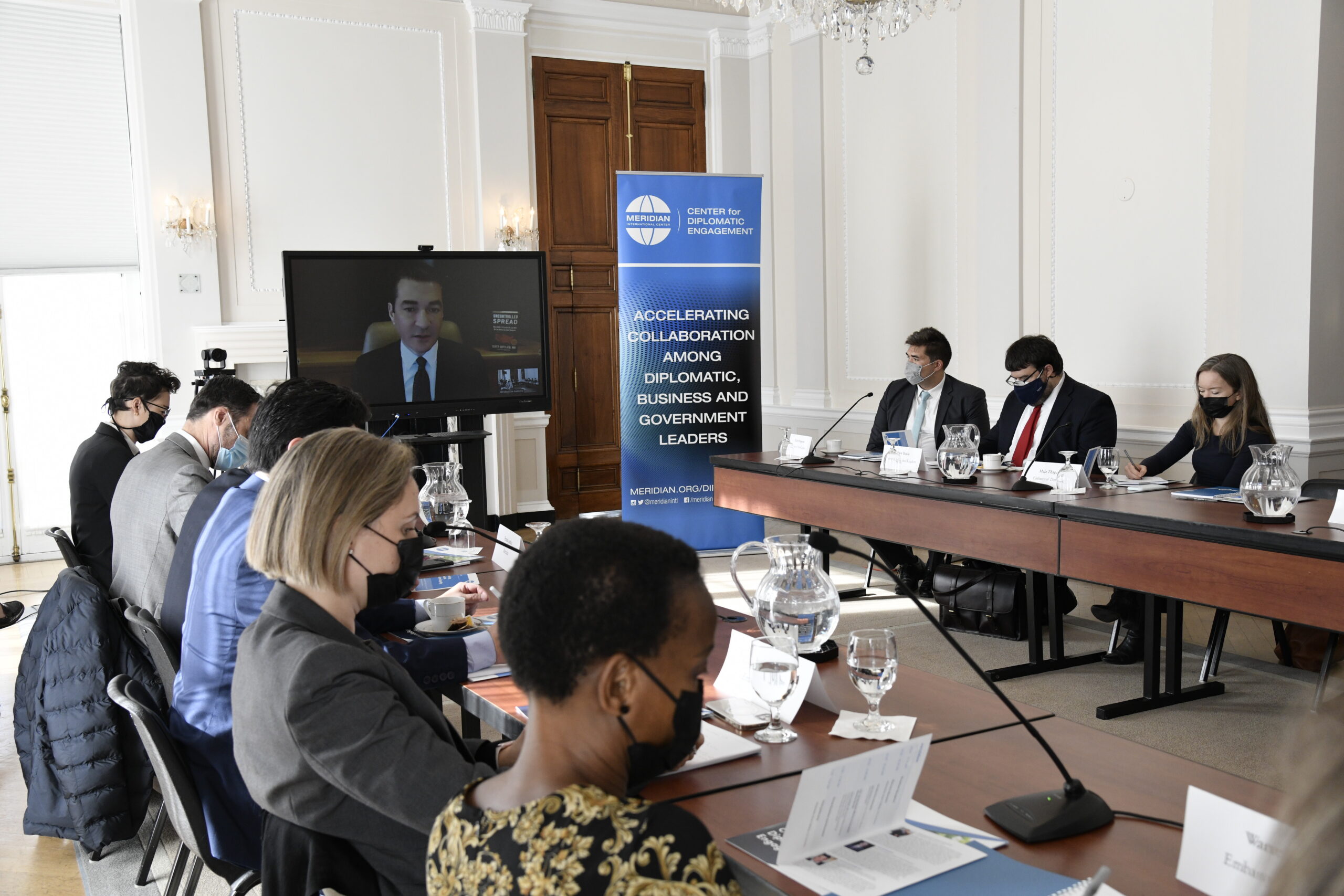
Worldwide distribution of COVID-19 vaccines is posing equity challenges, with the vast majority of vaccine doses being administered in high-income countries. It remains unclear how the world community will attain the WHO targets of vaccinating 40% of world’s population by end of 2021 and 70% by mid-2022.
Discussion in this program featuring Dr. Gottlieb, Former Commissioner of the Food and Drug Administration (2017-2019) and Senior Fellow, American Enterprise Institute (AEI), on COVID-19 vaccine issues included the best ways to increase vaccine penetration in the developing world and increase vaccine production capacity. The discussion explored the proposal at the WTO to waive intellectual property protections for COVID-19 vaccines and the importance of protecting innovation.
- There is adequate global supply of COVID-19 vaccines.There are enough Western-produced vaccines (Pfizer, Moderna, Johnson & Johnson) doses for all Americans to be fully vaccinated and for the West to donate or sell at-cost significant numbers of doses to low- and middle-income countries. There will be an estimated 10 to 15 billion doses produced next year by these Western producers. In addition, countries like China, Russia, India and others are also producing COVID-19 vaccines. There have been over 7.6 billion doses of the vaccine administered in over 180 countries.
- Intellectual property rights are not preventing vaccine equity. Intellectual property rights in biopharmaceuticals are important to protect the “formula” for making products and incentivize innovation. In the case of COVID-19, intellectual property and other trade secrets are not owned by a single company, as the mRNA vaccine production process is extremely complicated. India and South Africa introduced a proposal in April in the Council for Trade-Related Aspects of Intellectual Property Rights (TRIPS) in the World Trade Organization (WTO) to waive the intellectual property rights to the vaccine in an attempt to be able to produce their own vaccines, which has been discussed by governments for several months, and will be addressed at the forthcoming WTO ministerial. In particular, some have concerns that an intellectual property waiver at the WTO could disincentive innovation in COVID-19 treatments.
- Distribution remains a significant hurdle in the race for vaccine equity. Global vaccination rates remain low in less developed areas around the globe. Distribution is largely affected by geography and poor infrastructure, making it difficult to reach remote and rural areas. Vaccine equity will improve as governments and non-governmental organizations (NGO) work together to create logistics and distribution networks, as well as overcome vaccine hesitancy.
- Increasing confidence should be done through better education campaigns. Vaccine education and overcoming hesitancy are global issues that should be tackled through international organizations (like the WHO) and NGOs. Instilling confidence in COVID-19 vaccines has been a major challenge for countries, including the U.S. and other high-income nations. This should be done at the grassroots level around the globe. Increasing understanding of the vaccination through educational campaigns will boost confidence and increase vaccination rates.
- Global public health is costly, but necessary. COVID-19 vaccines and other facilities that may need to produce vaccines or therapeutics in case of emergency need to be operational at all times; they can’t be ramped up quickly, including because of the difficulty in finding needed human capital. One solution may be governments or international organizations funding to allow facilities to produce non-emergency biopharmaceuticals, and then pivot to emergency needs when necessary. The most efficient method to increase the rate of vaccine production is to scale current mRNA facilities, while new facilities are built regionally to help with future local health needs, as it takes years for physical construction, human capital development, and to craft appropriate government regulation.
For additional information on Vaccine Equity, please visit our resources page.
Project summary
| Top Takeaways: Sprinting Towards Vaccine Equity with Dr. Scott Gottlieb, MD | November 2021 | |
|---|---|
| Number of Attendees: | 19 |
| Regions: | Africa, East Asia and Pacific, Europe and Eurasia, Western Hemisphere |
| Countries: | Botswana, Canada, Denmark, Ecuador, Germany, New Zealand, Portugal, Singapore, United Kingdom |
| Impact Areas: | Global Health |
| Program Areas: | Diplomatic Engagement |
| Partners: | Diplomatic Corps, Private Sector |
